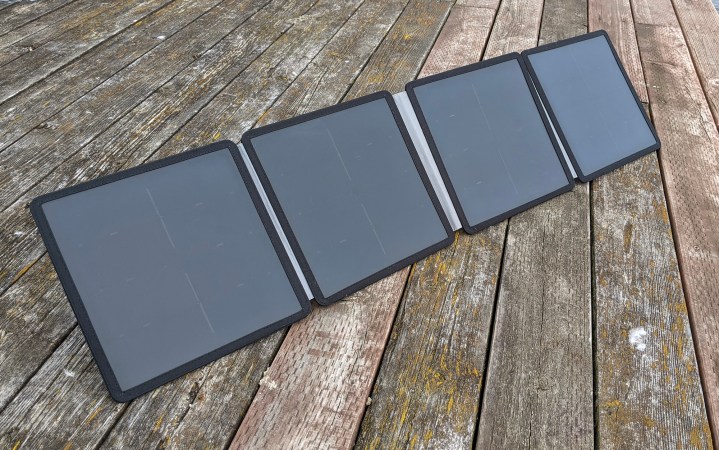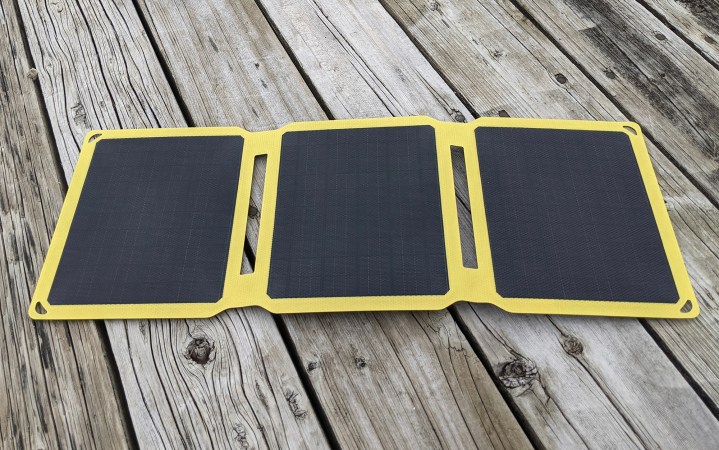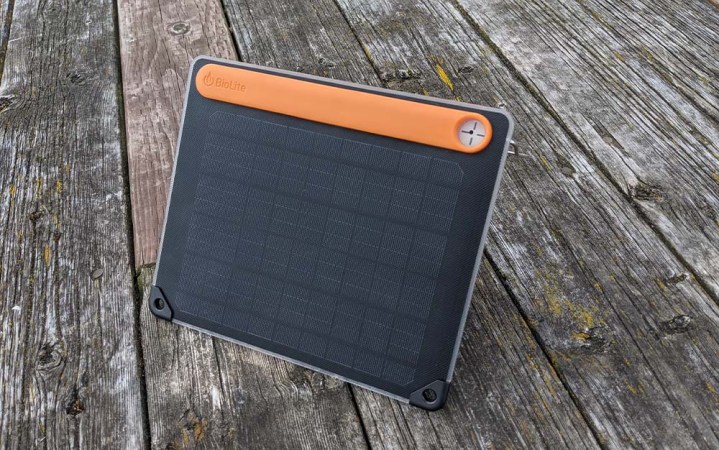The Best Solar Chargers of 2024
We may earn revenue from the products available on this page and participate in affiliate programs. Learn More ›
Solar chargers can translate the sun’s energy directly into power for small electronics. Whereas larger solar panels require a power station to play intermediary (lest you burn up your electronics), these smaller panels have just the right amount of kick for the likes of a smartphone or satellite messenger. To help you choose the best solar charger for your needs, I tested 13 different models from nine manufacturers in both full sun and heavy clouds to see which came out on top.
Best Overall: BigBlue SolarPowa 30
↓ Jump to Review
Best Value: Lion Energy 10W
↓ Jump to Review
Best for Camping: Lion Energy 50W
↓ Jump to Review
Best for Backpacking: SunJack 15W
↓ Jump to Review
Best Solar Power Bank: BioLite SolarPanel 5+
↓ Jump to Review
Best for Your Glove Box: 4Patriots PocketSun
↓ Jump to Review
Solar Chargers, Portable Solar Panels, and Solar Power Banks
While these terms are often used interchangeably, and are called different things by different manufacturers, for the purposes of Outdoor Life’s coverage, we’re defining them as follows:
- Portable Solar Panels: Large folding panels that must be paired with a power station
- Solar Chargers: Smaller panels that can directly charge electronic devices (like smartphones) via a USB cord
- Solar Power Banks: Units that combine the solar panel and power bank elements
How I Tested the Best Solar Chargers
I called in 13 different solar chargers from nine different manufacturers for testing. The main criteria was that it be a portable panel that you can use to charge a small electronic device, like a smartphone or a tablet, without the need for a power bank as an intermediary. The reason that power banks are typically used as an intermediary between larger solar panels and electronic devices is that small electronic devices simply can’t handle the full output of a larger solar panel. It would permanently damage the battery. So solar chargers tend to be smaller on average.
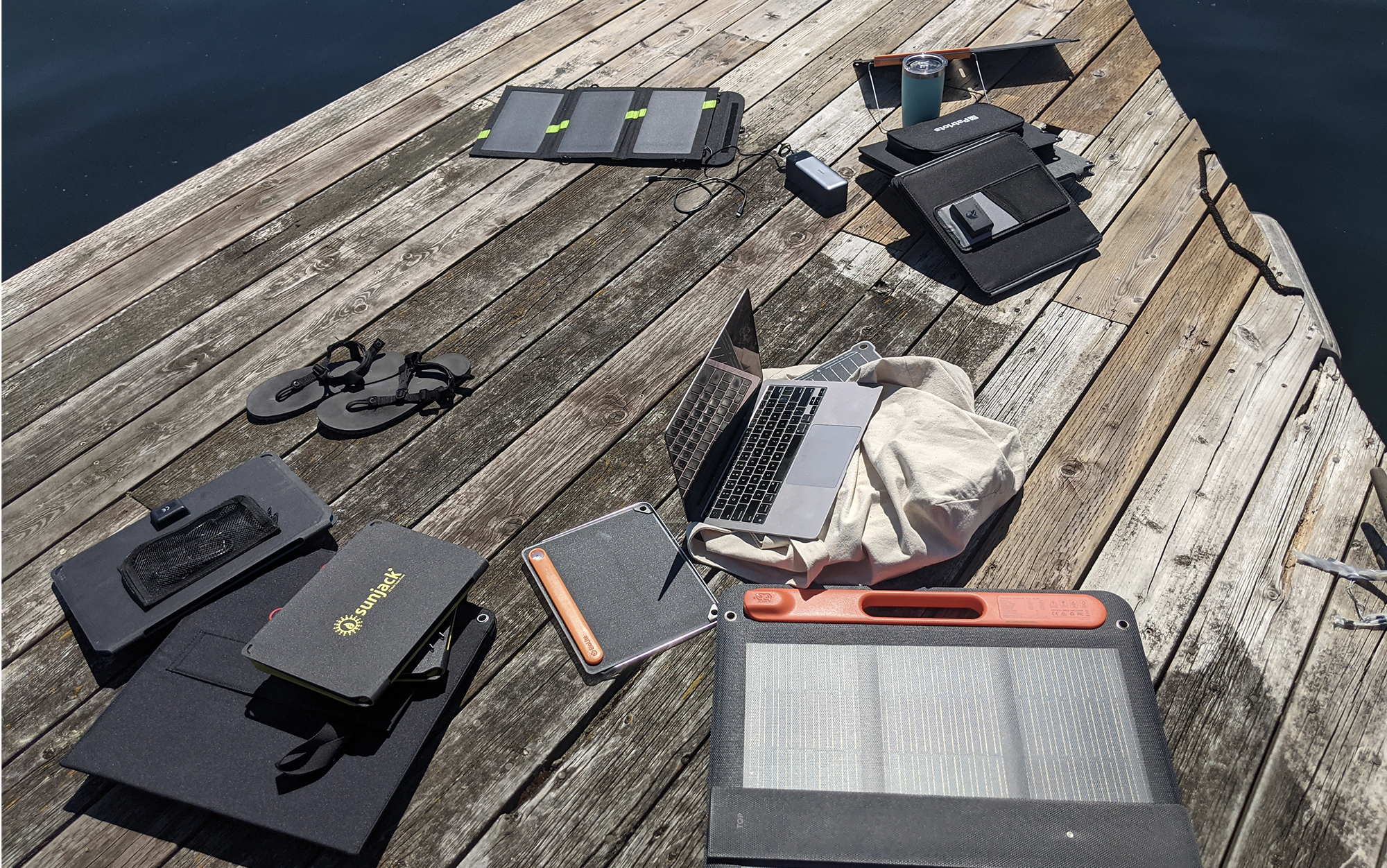
Laura Lancaster
The main focus of my test was each charger’s power output in sunny and cloudy conditions. My first test occurred midday in May. I primarily tested panels while lying flat on the ground but did check to see if utilizing the kickstand would make a difference in sunny conditions (it did not). I utilized the same USB-C and USB-A cords for each panel to ensure there were no unfair advantages or disadvantages there. Wattage output was measured using the Anker 737 Power Bank. I had to wait about a week to conduct my second test, in the same location but this time under cloudy skies.
| Solar Charger | Price | Tested Watts (Full Sun) | Tested Watts (Shade) | Weight | Packed Size | Open Size |
| 4Patriots 40-Watt | $150 | USB-A: 10.5W USB-C: 22.3W |
USB-A: 5.9W USB-C: 12.7W |
4 lbs, 6 oz | 13.5” x 9” x 2” |
13.5” x 36” |
| 4Patriots PocketSun | $50 | USB-A: 6.8W USB-C: 6.8W |
USB-A: 4.2W USB-C: 4W |
15 oz | 9” x 4.5” x 1.5” |
9” x 23” |
| Anker SOLIX PS30 | $80 | USB-A: 10.7W USB-C: 11W |
USB-A: 4W USB-C: 4W |
2 lbs, 2 oz | 11” x 8.5” x 1” |
11” x 35” |
| BigBlue SolarPowa 30 | $90 | USB-A: 10.8W USB-C: 17.8W |
USB-A: 3W USB-C: 5.5W |
2 lbs, 14 oz | 14” x 8.5” x 2” |
14” x 26” |
| BioLite SolarPanel 5+ | $100 | USB-A: 4.9W | N/A | 14 oz | 8.5” x 10” x 1” |
8.5” x 10” |
| BioLite SolarPanel 10+ | $150 | USB-A: 5W | N/A | 1 lb, 3 oz | 8.5” x 10” x 1” |
8.5” x 20” |
| Goal Zero Nomad 10 | $100 | USB-A: 6.5W | USB-A: 2.8W | 1 lb, 2 oz | 9.5” x 7” x 1” |
9.5” x 14.5” |
| Lion Energy 10W | $24 | USB-A: 6.4W | USB-A: 2.9W | 10 oz | 15” x 7.5” x .5” |
15” x 7.5” |
| Lion Energy 50W | $150 | USB-A: 10.3W USB-C: 22.6W |
USB-A: 10.3W USB-C: 13.7W |
4 lbs, 1 oz | 11.5” x 11.5” x 1.5” |
11.5” x 47” |
| Outdoor Tech Dawn | $130 | USB-A: 9.1W USB-C: 10.7W |
USB-A: 10.1W USB-C: 10.8W |
5 lbs, 2 oz | 16” x 16.5” x 1” |
16” x 32.5” |
| SunJack 15W | $60 | USB-A: 9.1W USB-C: 10.1W |
USB-A: 4W USB-C: 4.8W |
1 lb, 5 oz | 9” x 7.5” x 1” |
9” x 23.5” |
| SunJack 25W | $80 | USB-A: 9W USB-C: 10.7W |
USB-A: 6.3W USB-C: 6.6W |
1 lb, 11 oz | 11” x 7.5” x 1” |
11” x 23.5” |
| X-Dragon 20W | $57 | USB-A: 8W | USB-A: 5.2W | 1 lb, 5 oz | 12” x 7” x 1” |
12” x 20.5” |
I also independently weighed and measured the solar chargers for both their packed size and open size.
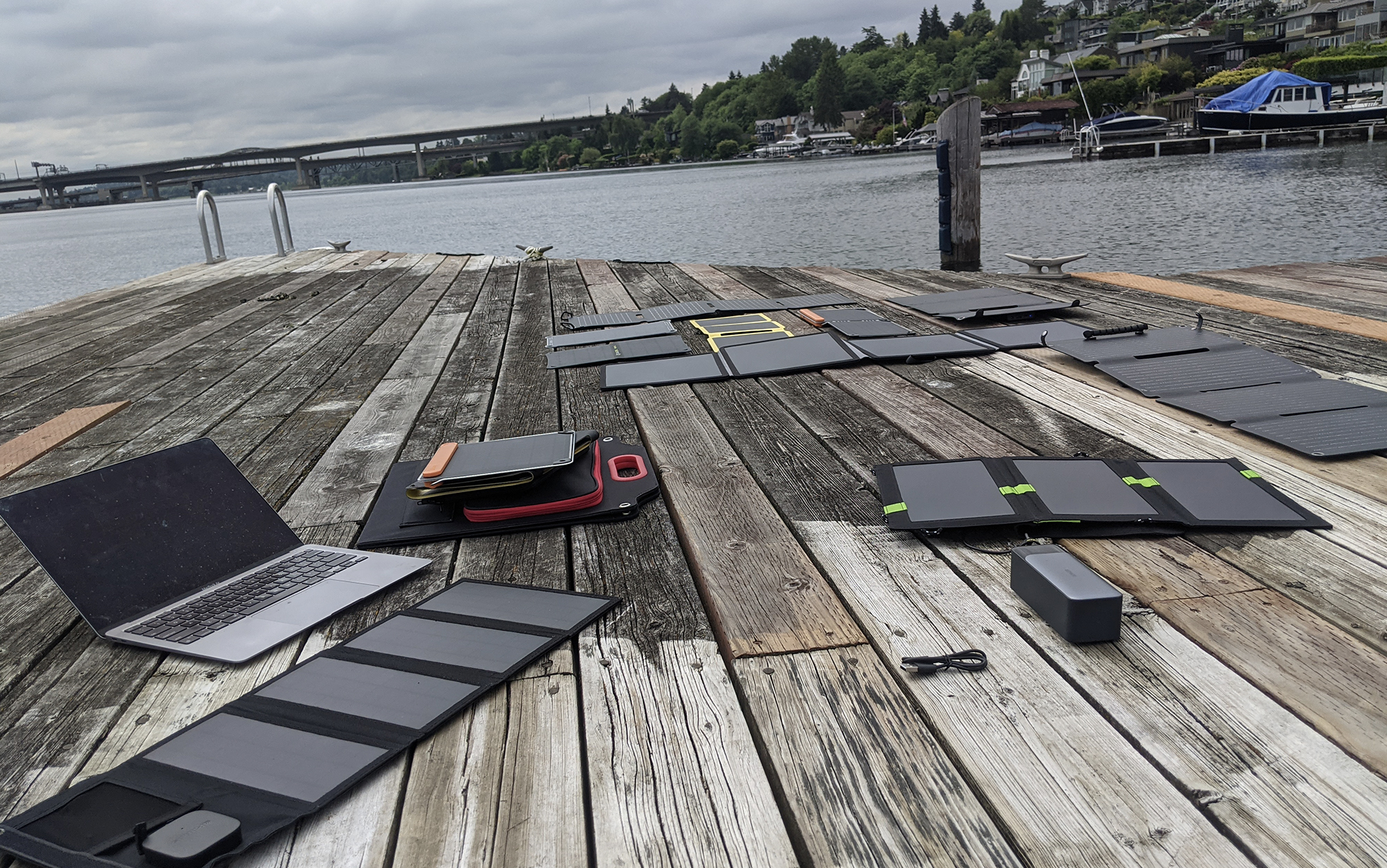
Laura Lancaster
In determining which solar chargers to recommend, I prioritized power output potential for the USB ports relative to its cost. Some panels may have higher output potential if paired with one of the best portable power stations, but that was outside of the scope of this test of the best solar chargers. I also considered weight to power output in my considerations, available USB ports, and other features that could impact the user experience.
The Best Solar Chargers: Reviews & Recommendations
Best Overall: BigBlue SolarPowa 30
Test Results
- Tested Watts (Full Sun): 17.8W (USB-C), 10.8W (USB-A)
- Tested Watts (Shade): 5.5W (USB-C), 3W (USB-A)
- Weight: 2 pounds, 14 ounces
- Packed Size: 14 x 8.5 x 2 inches
Key Features
- Ports: USB-A, USB-C, and DC
- Kickstand: Yes
- Cord Storage: No
Pros
- Good power potential in full sun
- Reasonably priced
- Snap buttons securely close the unit when folded
Cons
- No cord storage
- Not as powerful in cloudy conditions
The BigBlue SolarPowa 30 impressed during testing, generating 17.8 watts of power out of its USB-C port under sunny skies and clocking 5.5 watts in the shade. That means it should reliably charge your phone in most conditions. And it accomplishes that at well under $100.
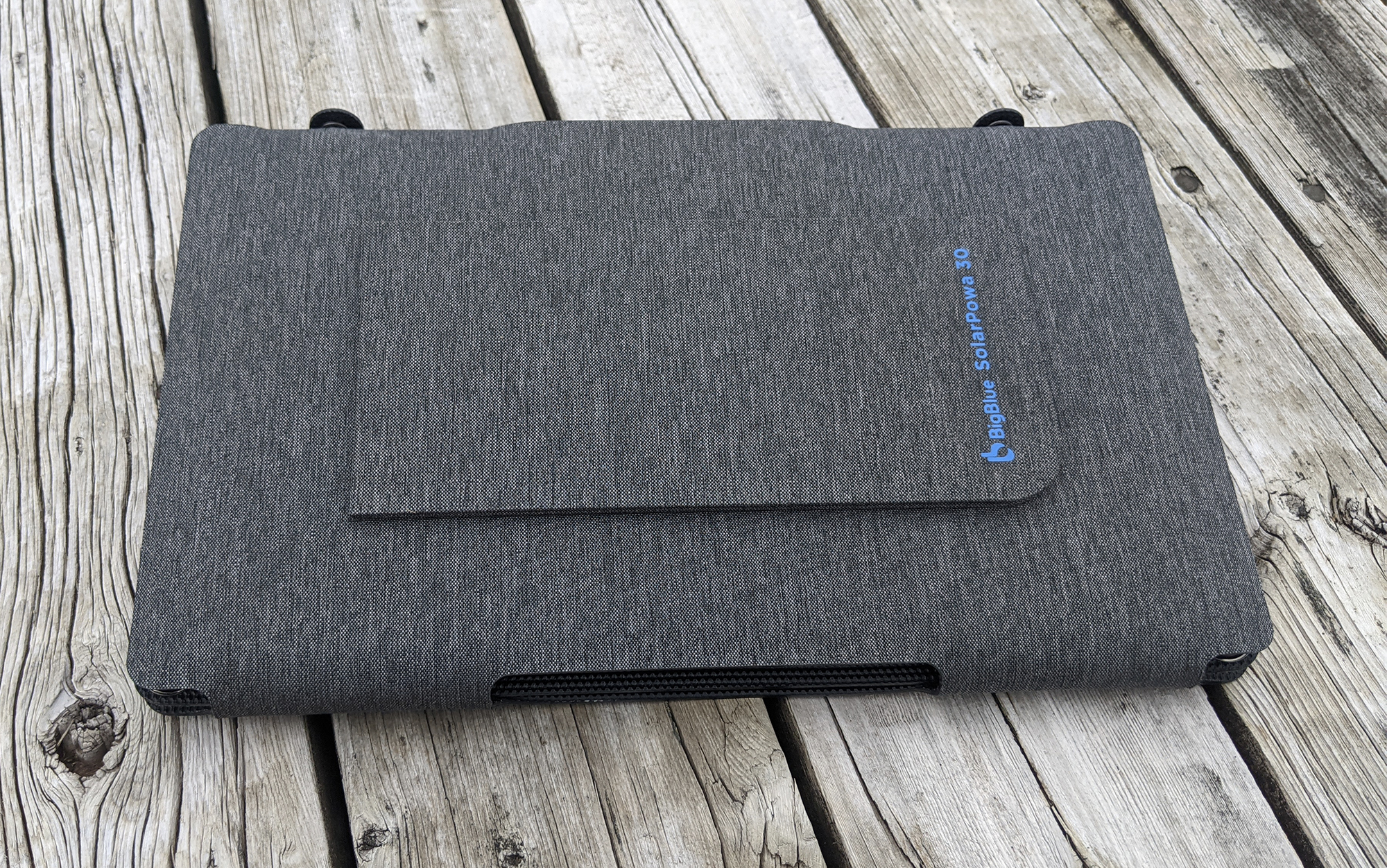
Laura Lancaster
While this panel only has one kickstand, in testing that was enough to aim it at the sun; however, the stiffness of the material connecting the three panel sections together had a tendency to hold its shape after being in storage for some time. Fortunately, it bent back without too much difficulty, and showed no signs of wear in the process. The BigBlue SolarPower 30 was on the larger side in my test, but this panel is still petite compared to the best portable solar panels and should take up virtually no space in your car camping kit. It’s even small enough that I would consider bringing it along on very short backpacking trips.
Best Value: Lion Energy 10W
Test Results
- Tested Watts (Full Sun): 6.4W (USB-A)
- Tested Watts (Shade): 2.9W (USB-A)
- Weight: 10 ounces
- Packed Size: 15 x 7.5 x .5 inches
Key Features
- Ports: USB-A
- Kickstand: None
- Cord Storage: None
Pros
- Very lightweight and space efficient
- Lowest priced option I looked at
- Surprising power generation
Cons
- Doesn’t fold down
- Only has a USB-A port
- Low energy output in the cloudy conditions
Dollar for watt, there was no more efficient solar charger that I looked at than the Lion Energy 10W. It had almost an identical power output to the Goal Zero Nomad 10, but at a quarter of the price. It was also the lightest weight panel I tested, although that came with a catch: There is no way to fold this panel up, and it only sports a single USB-A port. While this panel didn’t have a very high energy output when the clouds rolled in, it’s still likely to be a popular choice for emergency kits and backpackers who want to experiment with swapping out of the best power banks for a solar charger.
Best for Camping: Lion Energy 50W
Test Results
- Tested Watts (Full Sun): 22.6W (USB-C), 10.3W (USB-A)
- Tested Watts (Shade): 13.7 (USB-C), 10.3W (USB-A)
- Weight: 4 pounds, 1 ounce
- Packed Size: 11.5 x 11.5 x 1.5 inches
Key Features
- Ports: USB-A, USB-C, and DC
- Kickstand: Yes
- Cord Storage: Yes
Pros
- Impressive power output in a variety of conditions
- Packs up surprisingly small
Cons
- Expensive
- Heavy
The Lion Energy 50W doesn’t look like it has much oomph, but impressed during testing. Not only was it one of the best power generators under clear skies, it had hands-down the best result during my test in cloudy conditions, clocking 13.7 watts out of the USB-C port. Several of the other solar chargers I looked at couldn’t even manage that result under perfectly clear skies, let alone something gloomy.
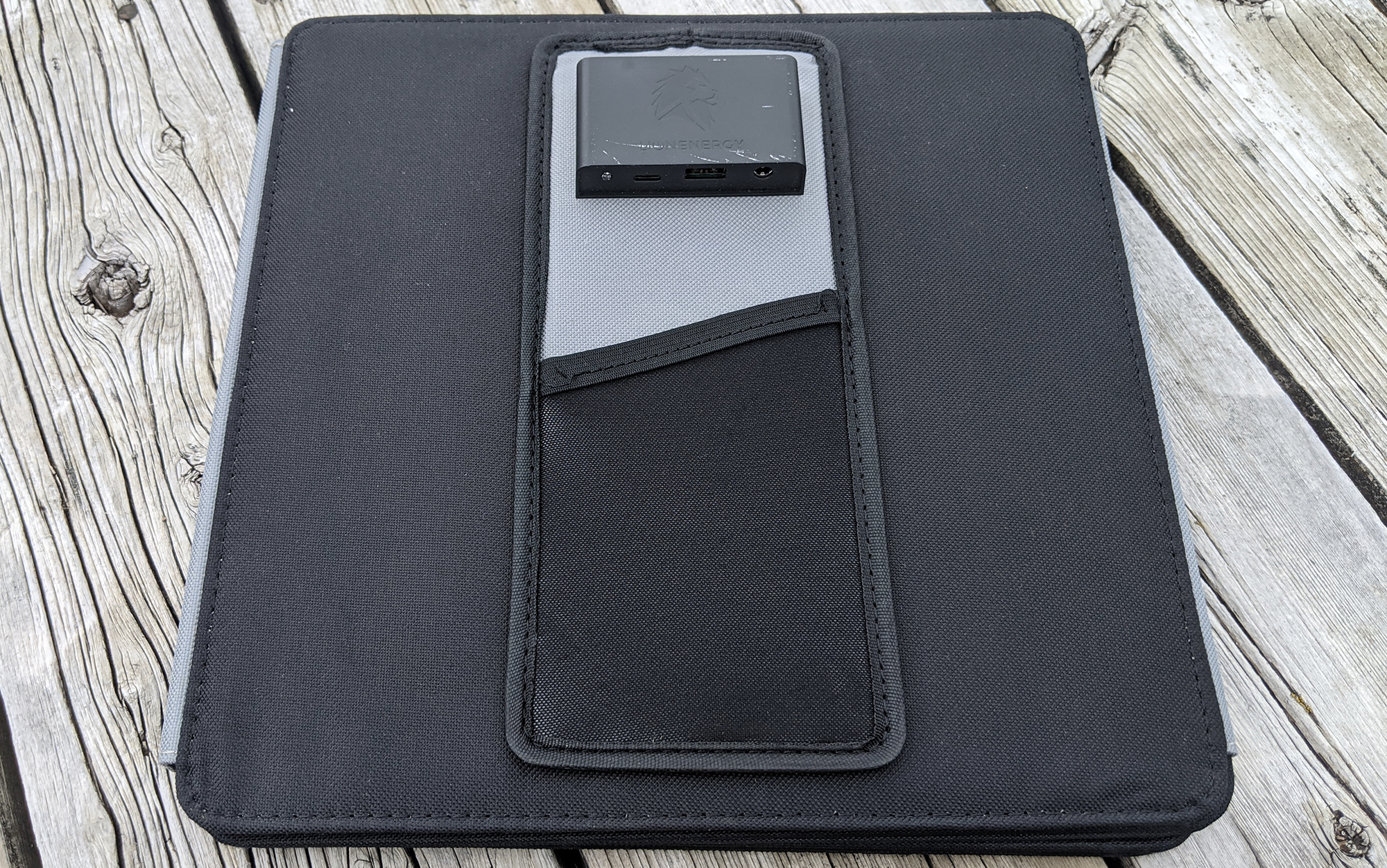
Laura Lancaster
While this panel packs up into a neat package, it is both too large and too heavy for backpackers or someone kitting out a go bag. However, this is an excellent panel to have on hand at a campground to top off small electronics, or to have in your home for emergency blackouts.
Best for Backpacking: SunJack 15W
Test Results
- Tested Watts (Full Sun): 10.1W (USB-C), 9W (USB-A)
- Tested Watts (Shade): 4.8W (USB-C), 4W (USB-A)
- Weight: 1 pound, 5 ounces
- Packed Size: 9 x 7.5 x 1 inch
Key Features
- Ports: USB-A and USB-C
- Kickstand: None
- Cord Storage: Yes
Pros
- Lightweight
- Good power potential for its price and size
Cons
- No kickstand
A decade ago it was more common to see backpackers with a small portable solar charger on the back of their backpacks or charging up their phone during an extended break. But today’s power hungry electronics make the weight-to-power potential harder to justify. In my test, the SunJack 15W had the second best energy-to-weight potential, just after the Lion Energy 10W. But I think this is a better choice for backpackers because it can charge upwards of 10W (as opposed to 6.4W) at a time, and includes a USB-C port in addition to a USB-A port. I also like that it has a small pouch to hold your charging cable.
Best Solar Power Bank: BioLite SolarPanel 5+
Test Results
- Tested Watts (Full Sun): N/A
- Tested Watts (Shade): N/A
- Weight: 14 ounces
- Packed Size: 8.5 x 10 x 1 inch
Key Features
- Ports: USB-A
- Kickstand: Yes
- Cord Storage: No
Pros
- Built-in battery
- Built-in sundial
- Great kickstand
Cons
- Expensive
- Cannot independently verify the output potential of the panel itself
While the BioLite Solar 5+ is better described as one of the best solar power banks, I’m including it here because it provides many of the same benefits of a solar charger. I like this unit in particular for its excellent sundial and kickstand features which make it easy to direct at the sun and ensure you’re getting the optimal amount of power potential.
Unfortunately, due to a small battery being built into the back of the unit, I cannot verify whether it is indeed generating 5W in full sun, or what its power potential is in the shade. (The battery itself will charge your phone 5W at a time.) But what’s nice here is that you can leave this solar charger set up somewhere sunny while you take photos or navigate with your phone elsewhere. Then you can use the now-full battery to charge up your phone in the darker evening hours.
Best for Your Glove Box: 4Patriots PocketSun
Test Results
- Tested Watts (Full Sun): 6.8W (USB-C), 6.8W (USB-A)
- Tested Watts (Shade): 4W (USB-C), 4.2W (USB-A)
- Weight: 15 ounces
- Packed Size: 9 x 4.5 x 1.5 inches
Key Features
- Ports: USB-A and USB-C
- Kickstand: No
- Cord Storage: Yes
Pros
- Compact size
- Great features
- Low weight and price
Cons
- Not the most powerful solar charger on this list
While not as powerful as other options I tested, I was impressed during testing at just how compact a package the 4Patriots PocketSun folded up into. Whereas the shape or lack of a closure mechanism or exposed ports make it tough to toss other solar chargers into your bag on the go, the five folds of the 4Patriots flexible frame and a secure velcro closure make this one the ideal choice for everything from a go bag to a beach bag.
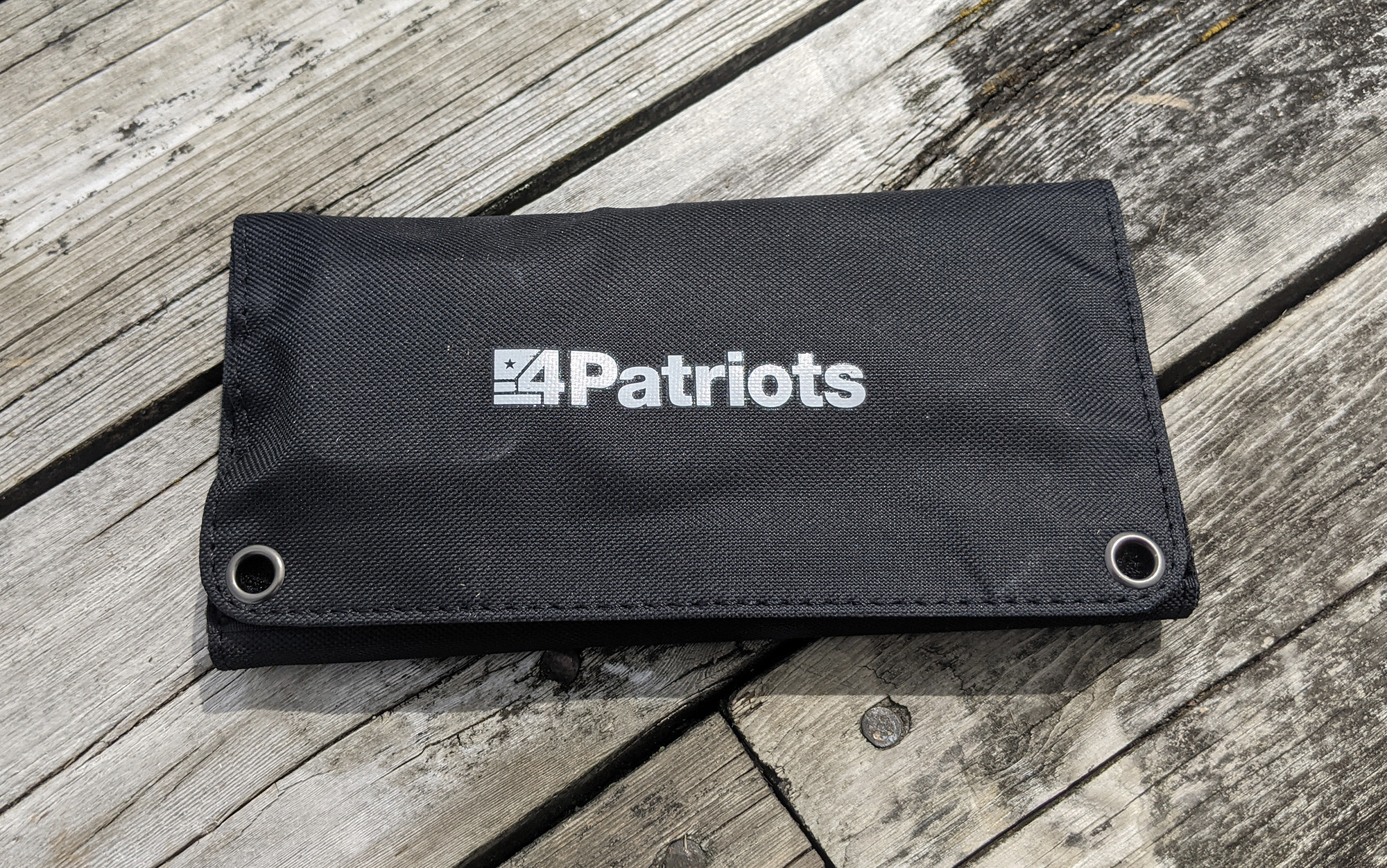
Laura Lancaster
If you’re looking for something small to put in the glove box of your car, the shape and size of this panel make it ideally suited for that purpose.
Things to Consider Before Buying a Solar Charger
Power Potential of Solar Chargers
Before making a final purchase, check my above chart on the actual power produced out of the USB-A and USB-C ports and compare them against your needs. In my testing, very few of the solar panels hit their maximum solar potential, even in full sun conditions, but some were noticeably closer to the mark than others.
Solar Charger Compatibility with Your Electronic Devices
Before purchasing a solar charger, check that the available ports and the power output potential match the needs of the device you’ll be powering.
| Solar Charger | Price | Ports | Kickstand | Carabiner Holes or Loops |
Built-In Cord Storage |
| 4Patriots 40-Watt | $150 | USB-A USB-C DC |
Good | Yes | Yes |
| 4Patriots PocketSun | $50 | USB-A USB-C |
No | Yes | Yes |
| Anker SOLIX PS30 | $80 | USB-A USB-C |
No | Yes | Yes |
| Big Blue SolarPowa 30 | $90 | USB-A USB-C DC (5525) |
Good | Yes | No |
| BioLite SolarPanel 5+ | $100 | USB-A | Excellent | Yes | No |
| BioLite SolarPanel 10+ | $150 | USB-A | Excellent | Yes | No |
| Goal Zero Nomad 10 | $100 | USB-A | Excellent | Yes | No |
| Lion Energy 10W | $24 | USB-A | None | Yes | No |
| Lion Energy 50W | $150 | USB-A USB-C DC |
Good | No | Yes |
| Outdoor Tech Dawn | $130 | USB-A USB-C 2 DC options |
Good | Yes | Yes |
| SunJack 15W | $60 | USB-A USB-C |
None | Yes | Yes |
| SunJack 25W | $80 | USB-A USB-C |
None | Yes | Yes |
| X-Dragon 20W | $57 | 2 USB-A | None | Yes | Yes |
Packed Size and Weight of the Best Solar Chargers
Some of the solar chargers I tested pack up small enough to disappear into a purse or backpack. Others were so large they had their own handle. Consider how you want to transport your solar charger and where it will be stored in your home.
FAQs
Solar chargers cost anywhere from $30 to $150.
Yes. While they will work much more slowly on cloudy days than they do in full sunlight, quality solar chargers will work on cloudy days.
The size solar charger you need depends in large part on how sunny it is where you live and what you are trying to power. If you live in a reliably sunny clime like Arizona and are only looking to charge a smartphone, the Lion Energy 10W would be an excellent choice. But if you’re up in the PNW, I’d go with the 50W model.
Solar chargers can be a nice complement to an emergency blackout kit or a backpacking trip, but if you have to choose one, go with one of the best power banks.
Final Thoughts on the Best Solar Chargers
The best solar charger for your needs depends on a number of factors, including your budget, your power needs, and the available sunlight in the region. After using several models over the course of several months, I provided the above recommendations based on ease of use, intended function, and power bank size.
- Best Overall: BigBlue SolarPowa 30
- Best Value: Lion Energy 10W
- Best for Camping: Lion Energy 50W
- Best for Backpacking: SunJack 15W
- Best Solar Power Bank: BioLite SolarPanel 5+
- Best for Your Glove Box: 4Patriots PocketSun
The post The Best Solar Chargers of 2024 appeared first on Outdoor Life.
Source: https://www.outdoorlife.com/gear/best-solar-chargers/



